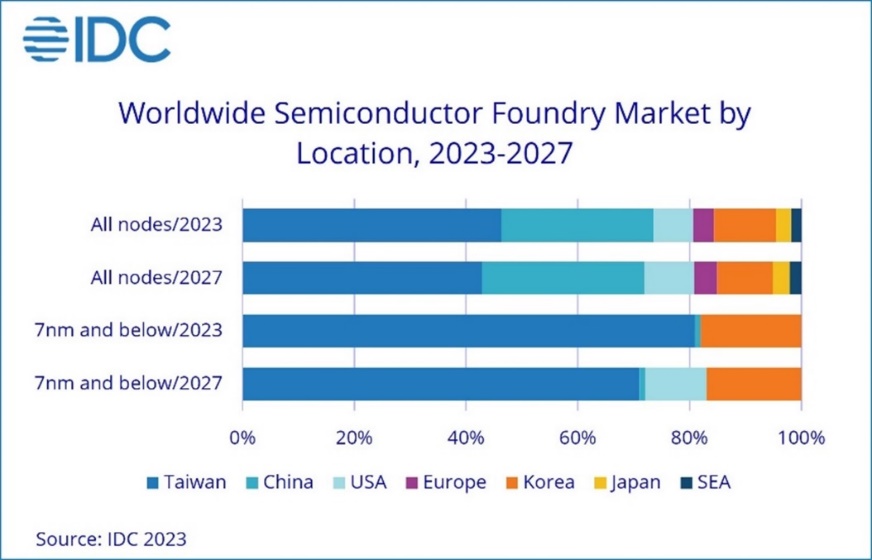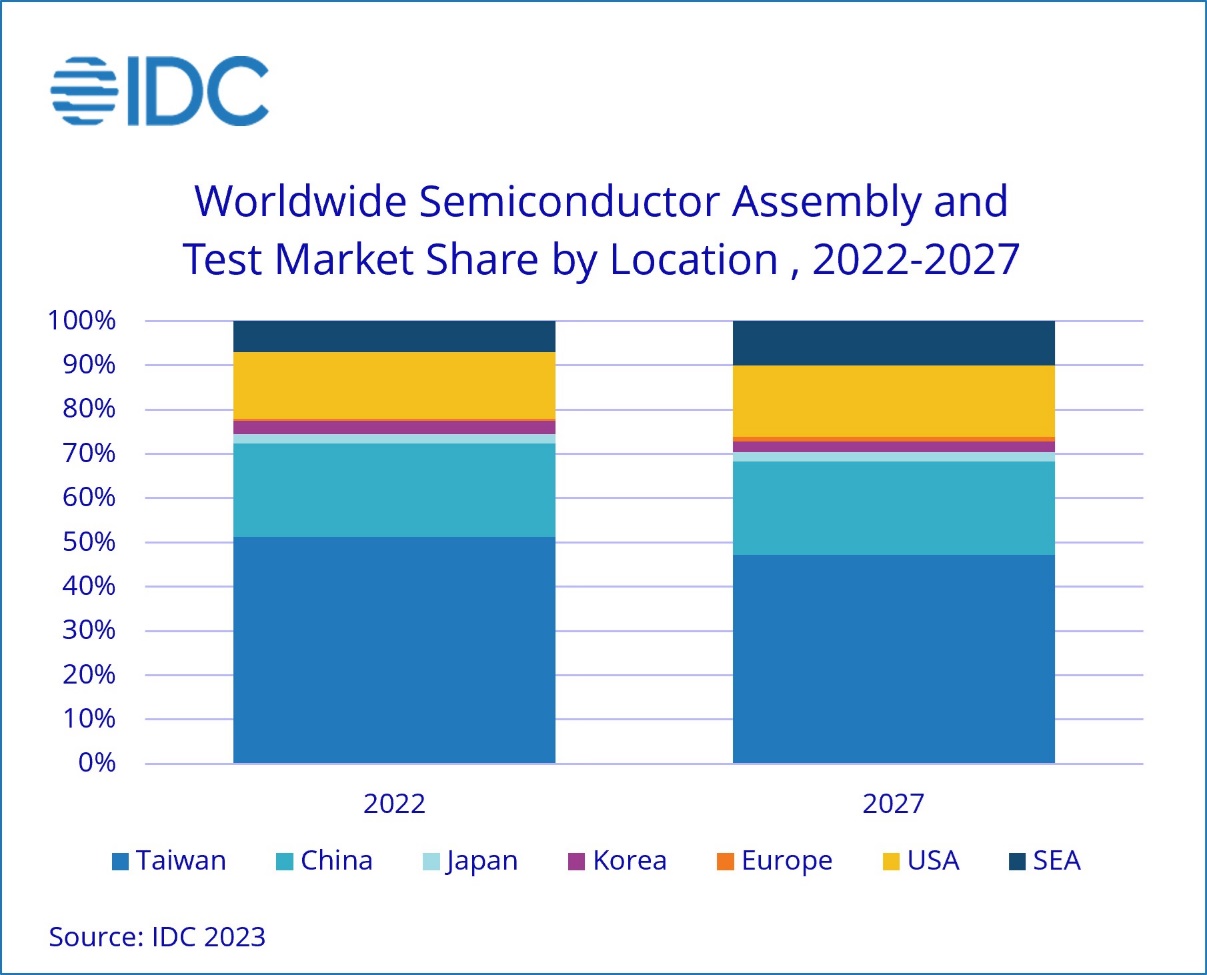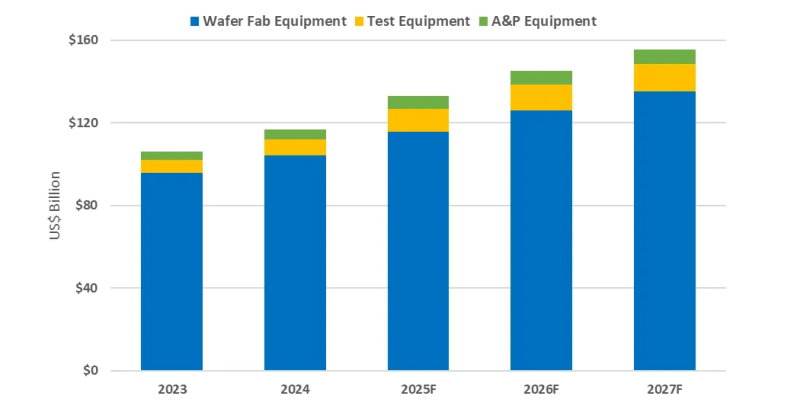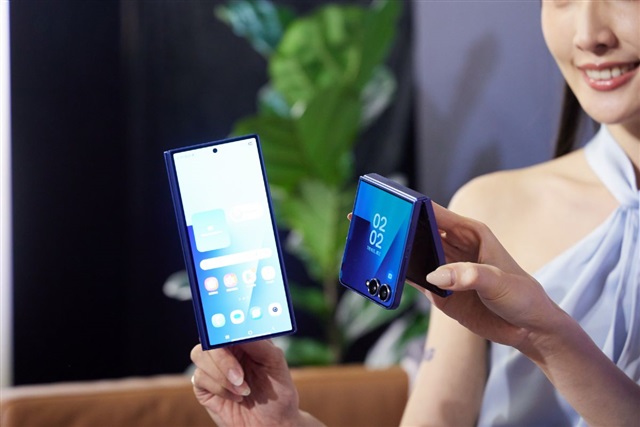“Geopolitical shifts are fundamentally changing the semiconductor game,” says IDC’s Helen Chiang, “while immediate impacts might be subtle, long-term strategies are focusing more on supply chain self-reliance, security, and control. The industry operation will move from global collaborations to multi-regional competitions,”
China’s rapid development of mature processes means its proportion of the foundry market will continue to increase, reaching 29% in 2027, an increase of 2% from 2023.
Taiwan’s proportion of the foundry market will fall from 46% in 2023 to 43% in 2027.
The US will make gains in advanced processes, and its share of the foundry market for 7nm and below is expected to reach 11% in 2027.

For assembly and test, IDMs have begun to invest more in the Southeast Asia market, and OSAT companies have begun to shift operations from China to Southeast Asia.
Southeast Asia is projected to play an increasingly important role in the semiconductor assembly and test market, especially in Malaysia and Vietnam.
Southeast Asia’s share of the global semiconductor assembly and test will reach 10% in 2027, while Taiwan’s share will decline to 47% in the same year from 51% in 2022.

Stay up to date with the latest in industry offers by subscribing us. Our newsletter is your key to receiving expert tips.

Worldwide semiconductor equipment sales are projected to grow 13.7 percent in 2025, reaching a record 133 billion dollars, Semi announced at Semicon Japan. This momentum is expected to continue throug

The smartphone industry is facing considerable cost challenges in 2026 amid ongoing memory supply shortages and rising prices. This situation is expected to lead to a 1.6% decrease in annual shipments

New research from Omdia shows that the semiconductor market delivered a record breaking performance in 3Q25 with industry revenue reaching $216.3bn, up 14.5% quarter-over-quarter (QoQ). This marks the